Water pooling around the base of a toilet is a common issue that homeowners may encounter. A failing wax ring, loose bolts, or cracks in the toilet base or surrounding materials often cause this problem. Ignoring this issue can lead to more severe consequences, such as water damage to floors, the growth of harmful mold, and potential structural issues in the bathroom. Addressing the problem promptly is essential to maintain your home’s integrity and its occupants’ health.
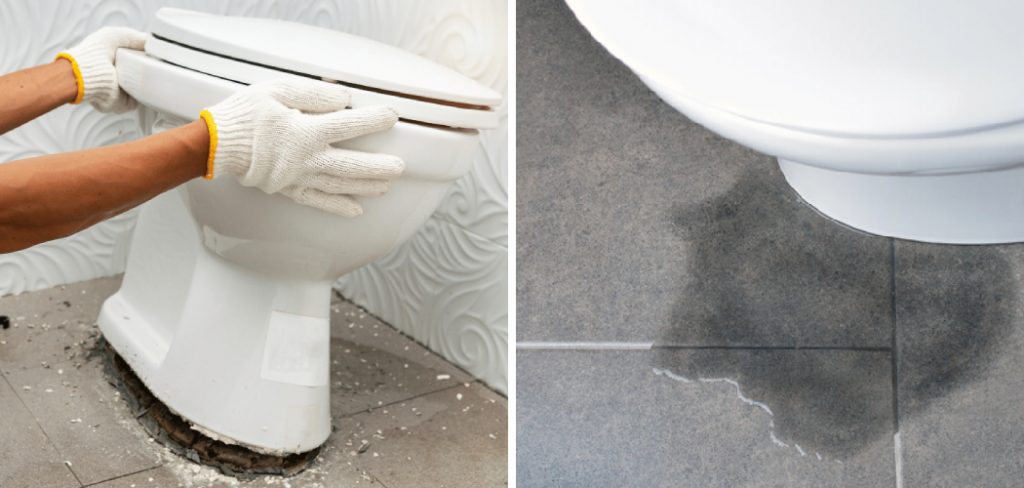
This guide aims to provide clear, step-by-step instructions on how to fix a leaking toilet base effectively. By following the outlined solutions, you can identify the root cause, apply the appropriate fixes, and prevent further complications. With proper maintenance and timely repairs, you can ensure your toilet’s long-term reliability and functionality, saving you time and costly future repairs.
Common Causes of a Leaking Toilet Base
Understanding the underlying causes of a leaking toilet base is crucial for efficiently identifying and resolving the issue. Below are the most common reasons why water may pool around the base of your toilet:
Loose Toilet Bolts (T-Bolts)
The T-bolts are responsible for securing the toilet tightly to the floor. Over time, these bolts can become loose due to regular use or improper installation. When the toilet shifts or wobbles, it creates gaps, allowing water to seep.
Worn or Damaged Wax Ring
The wax ring is a critical component that forms a watertight seal between the toilet and the drain flange on the floor. If this seal is worn out, cracked, or improperly installed, water will escape during every flush, leading to moisture around the toilet’s base.
Cracked Toilet Base
Although less common, small hairline cracks in the toilet base can result in slow leaks. These cracks may not be easily visible at first but can worsen over time, allowing water to escape and pool on the floor.
Condensation (Sweating Toilet)
Sometimes, what appears to be a leak is actually condensation on the toilet tank. This occurs when cold water fills the tank and comes into contact with the warmer, more humid bathroom air. The resulting “sweat” can drip down and collect around the base, mimicking a leak.
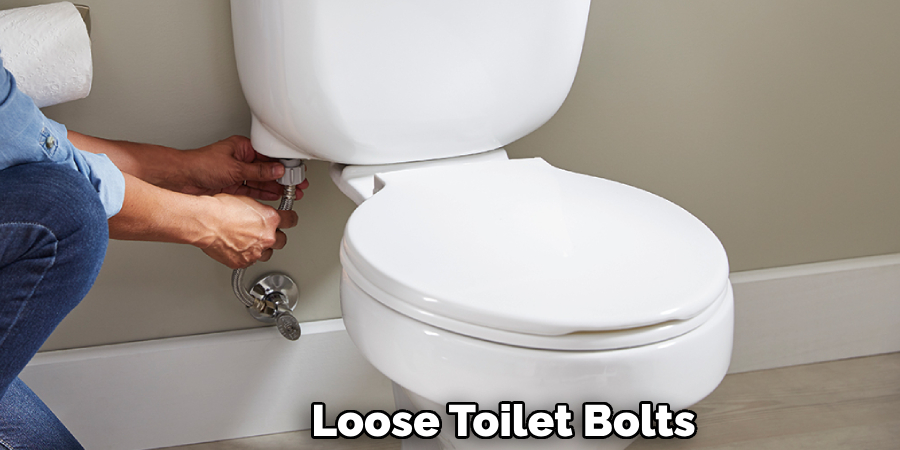
Tools and Materials Needed
Tools
- Adjustable wrench
- Screwdriver
- Putty knife
- Level (to check toilet alignment)
Materials
- Replacement wax ring or rubber gasket seal
- New T-bolts and washers
- Plumber’s putty or caulk (optional for sealing)
Safety Gear
- Rubber gloves
- Towels
- Bucket (for water cleanup)
The right tools and materials are essential for effectively addressing leaks around your toilet. The adjustable wrench and screwdriver will help remove and reinstall components, while a putty knife is useful for scraping off the old wax ring. A level ensures the toilet is aligned correctly during reinstallation, preventing future leaks.
For materials, replacing worn parts like the wax ring or T-bolts ensures a watertight seal. Plumber’s putty or caulk can add an extra layer of protection if needed. Additionally, safety gear such as gloves and towels helps maintain cleanliness and manage water spills during the process.
How to Fix a Leaking Toilet Base: Step-by-Step Guide
Step 1: Turn Off the Water Supply and Drain the Toilet
Locate the shutoff valve near the toilet base and turn it clockwise to stop the flow of water. Flush the toilet to remove as much water as possible from the bowl and tank. Use a sponge or towel to soak up any remaining water to ensure the area is dry and easier to work with during the repair.
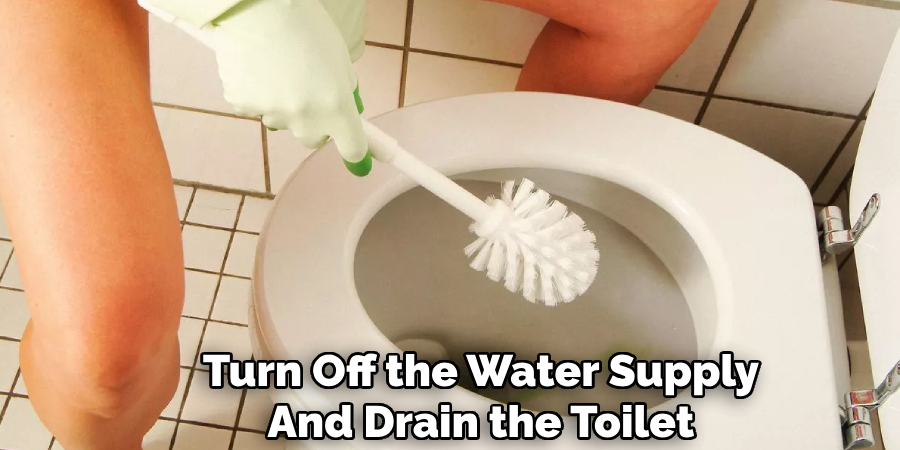
Step 2: Check and Tighten the T-Bolts
Remove the decorative caps covering the T-bolts at the base of the toilet. Using an adjustable wrench, carefully tighten the bolts evenly. Avoid overtightening, as this could crack the porcelain. Test for leaks by observing the base after flushing the toilet. If the leak is resolved, no additional steps may be required.
Step 3: Remove the Toilet if the Leak Persists
If tightening the T-bolts doesn’t fix the issue, the toilet may need to be removed. Start by disconnecting the water supply line from the bottom of the toilet tank. Carefully unbolt the toilet base and lift the unit, placing it on a towel or piece of cardboard to prevent damage to the floor. This step exposes the flange and old seal for inspection.
Step 4: Replace the Wax Ring or Rubber Seal
Using a putty knife, scrape away the old wax ring or remnants of the rubber seal from the toilet flange. Position a new wax ring or rubber gasket seal directly on top of the flange, ensuring it’s centered to create a proper seal when the toilet is reinstalled.
Step 5: Reinstall the Toilet and Test for Leaks
With the new seal in place, carefully lower the toilet onto the flange, aligning it with the bolts. Gently press down to compress the wax ring, ensuring a secure fit. Tighten the bolts evenly to prevent the toilet from rocking, but do not overtighten. Reconnect the water supply, turn on the shutoff valve, and flush the toilet to test for any leaks. Make final adjustments or apply a bead of caulk around the base for additional protection, if desired.
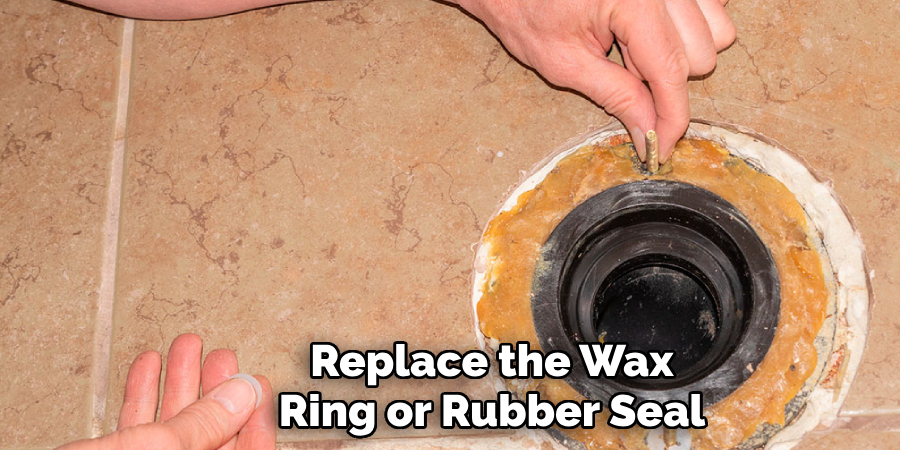
Addressing Cracks in the Toilet Base
Identifying a Crack
Carefully inspect the toilet base for visible hairline cracks or any signs of slow seepage. These issues can often go unnoticed but can lead to larger problems like water damage if left unaddressed. Pay close attention to areas around the mounting points and the base, as these are familiar places where cracks may develop.
Temporary Fixes
A waterproof epoxy can serve as a temporary solution for small, superficial cracks. Clean the damaged area thoroughly, allowing it to dry before applying the epoxy. Follow the manufacturer’s instructions to seal the crack effectively. While this method can prolong the toilet’s life, monitoring the repair regularly is important, as this is not a permanent fix.
When to Replace the Toilet
If the crack is large, spreading, or causing significant leakage, replacing the toilet is the best course of action. Using a compromised toilet risks further damage to your bathroom floor and subfloor, potentially leading to costly repairs. Investing in a new toilet ensures safety, functionality, and long-term savings while preventing further water-related issues.
Preventative Maintenance Tips
Regularly Inspect the Toilet Base
Make it a habit to inspect the base of your toilet regularly. Check for any signs of movement or instability, as a wobbly toilet can lead to stress cracks over time. Additionally, look for small leaks or water pooling around the base, which could indicate potential issues. Early detection of these problems can prevent further damage and extend the life of your toilet.
Avoid Over-Tightening Bolts
When securing a toilet to the floor, avoiding over-tightening the bolts is important. Excessive pressure can lead to cracks in the porcelain base, compromising the toilet’s structural integrity. Use just enough force to secure the toilet without putting undue stress on the material, ensuring a stable and safe installation.
Use a High-Quality Wax Ring
A high-quality wax ring creates a long-lasting seal between the toilet and the flange. This seal prevents leaks and keeps your bathroom free of unpleasant odors. Cheap or improperly installed wax rings can fail over time, leading to water escaping and potentially damaging your subfloor. Investing in a durable wax ring ensures you maintain a tight, reliable seal for years to come.
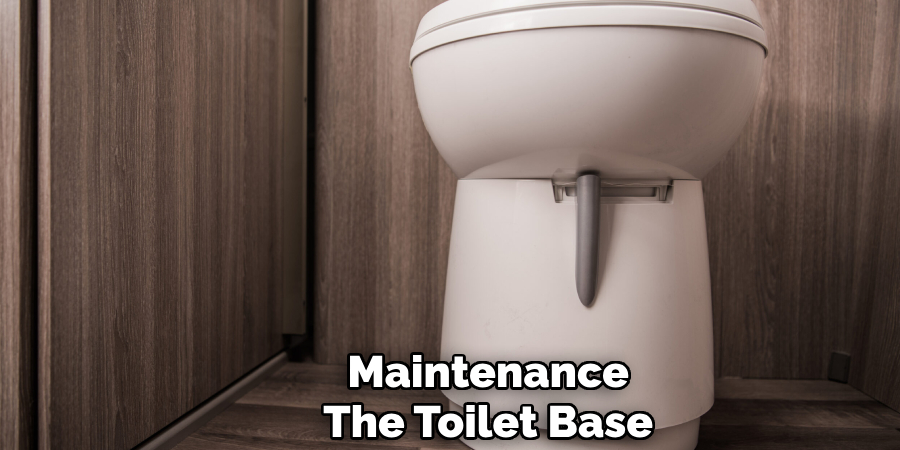
Conclusion
Addressing a leaking toilet base promptly is crucial to preventing costly water damage and maintaining a functional bathroom. By understanding “how to fix a leaking toilet base,” you can identify and resolve issues such as loose bolts, worn wax rings, or cracks in the porcelain. Early detection and repair save money and protect your home’s infrastructure.
Regularly inspecting your toilet and performing routine maintenance ensures long-term reliability and prevents future problems. With the right tools, quality materials, and attention to detail, anyone can effectively troubleshoot and fix a leaking toilet base to keep their bathroom in excellent condition.
About the Author
Adrian Green is a passionate woodworking enthusiast who has dedicated his life to the craft of woodworking. From his early days working alongside his father in the family woodworking shop, Adrian has honed his skills and developed a deep love for creating beautiful, functional pieces with his hands. As the voice behind The Woodenify Blog, he shares his knowledge, tips, and inspiration with fellow woodworkers of all skill levels, helping them build confidence in their abilities while learning new techniques.
Professional Focus
- Specializes in DIY woodworking projects, from furniture making to home décor.
- Provides step-by-step guides, tips, and practical tutorials for woodworkers at any skill level.
- Focused on empowering readers with confidence and knowledge through easy-to-follow instructions and hands-on techniques.
- Passionate about building a community where makers can share, learn, and grow together in the world of woodworking.
Education History
University of Craft and Design – Bachelor of Fine Arts (BFA) in Woodworking and Furniture Design
Woodworking Apprenticeships – Gained extensive hands-on experience through various workshops and mentorships with seasoned craftsmen, refining carpentry and furniture-making skills.
Expertise
- DIY woodworking, carpentry, furniture making, and home décor projects.
- Creating clear, accessible tutorials and guides for beginner to advanced woodworkers.
- Helping readers experience the satisfaction and fulfillment of turning raw materials into stunning finished products.
